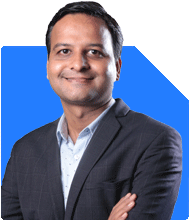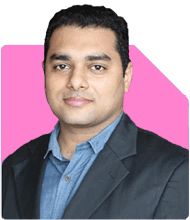Granddaughter's RD maturing - Where to invest for future education? (age 10)
Ramalingam Kalirajan |10870 Answers |Ask -Follow
Mutual Funds, Financial Planning Expert - Answered on Nov 14, 2024
He has an MBA in finance from the University of Madras and is a certified financial planner.
He is the director and chief financial planner at Holistic Investment, a Chennai-based firm that offers financial planning and wealth management advice.... more

Sir, RD in the name of my granddaugher (aged 10 years) is maturirg in Dec24' I will get Around Rs.9,50,000. Where do I invest this amount in lump sum for her higher studies in the future. I already investiting in SSY. Apart from Equities,MFs,where can I invest that amount?. I am having enough exposure in Equities and Mutual Funds
1. Fixed Maturity Plans (FMPs)
What They Are: Fixed Maturity Plans (FMPs) are close-ended debt funds that invest in fixed-income securities with a defined maturity period. They offer predictable returns and are typically less volatile than traditional debt funds.
Why It Fits: Since the amount is intended for your granddaughter’s education, FMPs offer the dual benefit of stable returns and tax efficiency, especially if held for the long term. Gains on FMPs held for over three years are eligible for indexation benefits, reducing tax liability on long-term capital gains.
Suggested Tenure: Choose an FMP with a maturity period aligning with her education timeline, like a 5-year or 7-year plan, for optimal growth.
2. RBI Floating Rate Savings Bonds
What They Are: Issued by the Reserve Bank of India, these bonds are low-risk instruments with a floating interest rate, revised every six months. They offer reliable returns and are fully backed by the government.
Why It Fits: RBI Floating Rate Savings Bonds are safe and provide a steady income, making them a suitable choice for those who prefer security and inflation-beating returns without much exposure to market volatility.
Investment Tenure: These bonds come with a 7-year lock-in period, which aligns well with your long-term requirement for your granddaughter’s education.
3. Tax-Free Bonds
What They Are: Issued by government-backed entities like National Highways Authority of India (NHAI) or Power Finance Corporation (PFC), tax-free bonds provide a stable, tax-free income and are often long-term instruments (10-15 years).
Why It Fits: Tax-free bonds are a reliable investment option for generating tax-efficient returns without the volatility of equities. They provide periodic interest, which can be reinvested for compounding or used for other financial goals.
Suggested Strategy: These bonds are usually available in secondary markets. Buying them at current market prices can help lock in long-term, tax-free returns until maturity, ideally matching your granddaughter’s educational needs.
4. Senior Citizens Savings Scheme (SCSS) via Grandparents
What It Is: The Senior Citizens Savings Scheme (SCSS) offers a fixed interest rate and is specifically designed for senior citizens. The scheme has a 5-year tenure with an option to extend by another 3 years.
Why It Fits: If you or your spouse qualifies as a senior citizen, you could invest in SCSS on your granddaughter’s behalf. SCSS offers higher returns compared to traditional bank FDs, and interest payments every quarter can be reinvested or set aside for future needs.
Tax Efficiency: Interest earned from SCSS is taxable, but this can be managed through tax planning or reinvesting.
5. Public Provident Fund (PPF) Extension
What It Is: PPF is a government-backed savings option, offering a guaranteed return with tax benefits on both the principal and interest. If you have an active PPF account, it could be extended after maturity in blocks of five years.
Why It Fits: PPF is ideal for long-term goals due to its tax-free status. Extending an existing PPF account, if applicable, would allow the corpus to grow tax-free, ensuring a stable future amount for your granddaughter's education.
Lock-In Benefit: PPF’s long lock-in period ensures discipline, making it suitable for someone like your granddaughter, whose educational needs may arise around the time the lock-in ends.
6. Post Office Monthly Income Scheme (POMIS)
What It Is: The Post Office Monthly Income Scheme (POMIS) offers a fixed monthly income, with capital preservation as the primary focus. It has a 5-year lock-in and pays out a fixed monthly interest.
Why It Fits: POMIS is a safe, stable option, especially if you wish to supplement your granddaughter’s educational fund. The monthly income can be reinvested into a recurring deposit or other instruments to maximize growth.
Flexibility: After the 5-year lock-in, you can reinvest or transfer the amount to other suitable schemes depending on her education timeline.
7. Gold Bonds for Diversification
What They Are: Sovereign Gold Bonds (SGBs) are issued by the Government of India, offering a way to invest in gold without the hassle of physical storage. These bonds have a tenure of 8 years with an exit option after the 5th year, and they also provide a 2.5% annual interest.
Why It Fits: SGBs provide dual benefits: capital appreciation linked to gold prices and annual interest income. Since gold is traditionally a hedge against inflation, this could be a valuable addition to your granddaughter’s education fund.
Tax-Free Returns: Gains on SGBs held to maturity (8 years) are tax-free, adding to their appeal as a long-term, inflation-beating asset.
Final Insights
With an amount of Rs. 9.5 lakh maturing soon, diversifying across these stable, secure options will help preserve and grow the capital efficiently. Here’s a quick summary for a structured approach:
Fixed Maturity Plans (FMPs) and RBI Floating Rate Savings Bonds for a blend of stability and moderate growth.
Tax-Free Bonds and SCSS (if eligible) for regular income and tax efficiency.
Public Provident Fund (PPF) extension and Gold Bonds (SGBs) for long-term, inflation-beating growth.
These alternatives provide low-risk growth with predictable returns, aligning well with your goal of funding your granddaughter's higher education.
Best Regards,
K. Ramalingam, MBA, CFP,
Chief Financial Planner,
www.holisticinvestment.in
https://www.youtube.com/@HolisticInvestment
You may like to see similar questions and answers below
Ramalingam Kalirajan |10870 Answers |Ask -Follow
Mutual Funds, Financial Planning Expert - Answered on Jul 08, 2024
Ramalingam Kalirajan |10870 Answers |Ask -Follow
Mutual Funds, Financial Planning Expert - Answered on Jul 30, 2024
Ramalingam Kalirajan |10870 Answers |Ask -Follow
Mutual Funds, Financial Planning Expert - Answered on Jan 11, 2025
Dr Dipankar Dutta |1837 Answers |Ask -Follow
Tech Careers and Skill Development Expert - Answered on Dec 05, 2025
Dr Shyam Jamalabad |108 Answers |Ask -Follow
Dentist - Answered on Dec 05, 2025
Dr Shyam Jamalabad |108 Answers |Ask -Follow
Dentist - Answered on Dec 05, 2025
Dr Shyam Jamalabad |108 Answers |Ask -Follow
Dentist - Answered on Dec 05, 2025
Dr Dipankar Dutta |1837 Answers |Ask -Follow
Tech Careers and Skill Development Expert - Answered on Dec 05, 2025
Ulhas Joshi |280 Answers |Ask -Follow
Mutual Fund Expert - Answered on Dec 05, 2025
Dr Dipankar Dutta |1837 Answers |Ask -Follow
Tech Careers and Skill Development Expert - Answered on Dec 04, 2025
Ravi Mittal |676 Answers |Ask -Follow
Dating, Relationships Expert - Answered on Dec 04, 2025
Anu Krishna |1745 Answers |Ask -Follow
Relationships Expert, Mind Coach - Answered on Dec 04, 2025
Anu Krishna |1745 Answers |Ask -Follow
Relationships Expert, Mind Coach - Answered on Dec 04, 2025


























